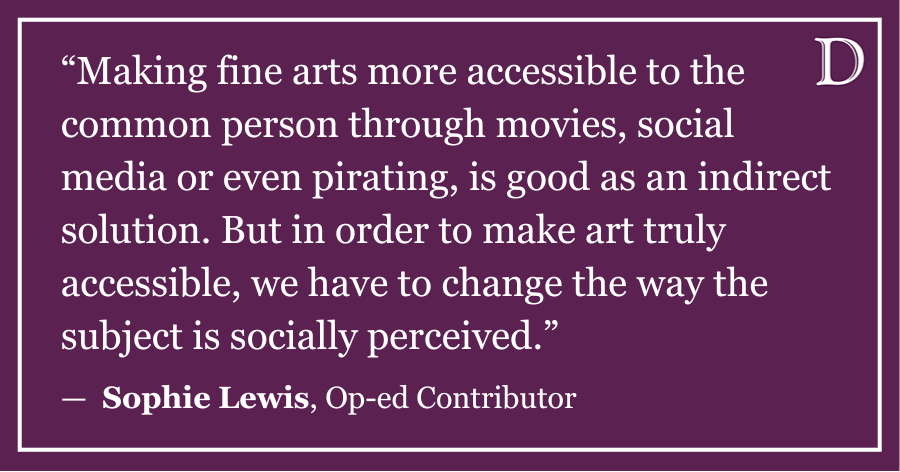There are few journeys more treacherous for a Weinberg student than the gradual undertaking of fulfilling all of the school’s distribution requirements. Spread out across six continents of “intellectual inquiry,” the required courses aim to diversify academic plans by encouraging students to explore a variety of fields, according to Weinberg’s website.
However, there is a grave inconsistency between the stated objective of distribution requirements and the types of classes permitted to fulfill them. Currently, only classes of scholarly analysis, or non-creative study of a discipline, count for distribution requirements. Applied arts classes — including creative writing, painting, dance and music — do not fulfill the requirements. This policy fails to recognize the importance of creative and performing arts in the exploration of different disciplines.
Most people would reasonably expect that a creative writing or studio painting elective would fulfill the Area VI: Literature and Fine Arts requirement. Yet, it does not. It is easily arguable that the creation of art is of greater merit than the ability to study it. I reference and modify the classic adage, “Those who can, do; those who can’t, study.”
The value of hands-on practice is indeed acknowledged by many departments at Northwestern. The art history major requires a studio course, science classes require corequisite labs and independent research counts as credit for nearly all majors.
So why is it that applied arts don’t fulfill distribution requirements? This is due to the balance between creation and consumption, the scale ever unhealthily tipping towards consumption. Academically, this manifests as an overemphasis on analysis. We prefer to concern ourselves with what we think about something, rather than what we can do with it. The irony of this trend is that if there are no creators making art, then one day, there will be nothing left to study.
To return to a more stable creation-consumption equilibrium, I propose expanding distribution requirements to include applied arts. It only makes sense that music composition courses should be included in Area II: Formal Studies, along with math and logic. Why shouldn’t dance classes, exemplar of culture, count for Area III: Social and Behavioral Sciences? Similar arguments could be made for creative writing and studio art for Area VI.
The University is constantly researching the best teaching methods. Placing an emphasis on applied arts offers a promising pedagogical redirection while reinforcing the original well-intentioned objective of distribution requirements. As a student, I want to be challenged to use my skills in new, unanticipated ways. Applied arts do that — and I should receive credit for it.
Nick Bucciarelli is a Weinberg junior. He can be contacted at [email protected]. If you would like to respond publicly to this op-ed, send a Letter to the Editor to [email protected]. The views expressed in this piece do not necessarily reflect the views of all staff members of The Daily Northwestern.





